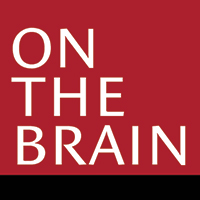Spring 2019
“Watch what happens,” Emery Brown, AB ’78, AM ’84, MD ’87, PhD ’88, says as he plays a video of brain wave recordings.
 He’s watching electroencephalography (EEG) from one of his patients starting to receive anesthesia at Massachusetts General Hospital (MGH). “You’re going to see when the drug starts to work. Boom. See those small, regular oscillations? The patient is becoming sedated. And now these big oscillations come on, and the patient becomes unconscious.”
He’s watching electroencephalography (EEG) from one of his patients starting to receive anesthesia at Massachusetts General Hospital (MGH). “You’re going to see when the drug starts to work. Boom. See those small, regular oscillations? The patient is becoming sedated. And now these big oscillations come on, and the patient becomes unconscious.”
Brown, an anesthesiologist, statistician, and neuroscientist with endowed professorships at Harvard Medical School and MIT, studies how anesthetics work in the brain. His pioneering research holds promise for improving the delivery and safety of general anesthesia and for developing new ways to create, monitor, and control the state of general anesthesia.

Discover the latest news on the brain from Harvard Medical School
Researchers are revealing more about how the brain and nervous system
work– and translating those insights into new treatments
According to Brown, anesthetic drugs cause brain circuits to change their oscillation patterns in particular ways, thereby preventing neurons in different brain regions from communicating with each other. The result is a loss of consciousness—an unnatural state that he compares to a “reversible coma”—that differs from sleep. The oscillations vary, he explains, based on the type and amount of anesthetic used and the age of the patient’s brain (since brains age at different rates). These powerful drugs can cause mental side effects that often linger for days, months or longer.
 Brown uses EEG to measure these oscillations, drawing on his knowledge of signal processing and statistics to examine these wave patterns. He makes sure that all of his patients are connected to EEG machines to monitor their brains’ electrical activity during surgery under general anesthesia. He recommends that all practicing anesthesiologists use this approach, “because it gives a much clearer understanding of how unconscious patients are, and it allows them to titrate the drugs in a more principled manner.”
Brown uses EEG to measure these oscillations, drawing on his knowledge of signal processing and statistics to examine these wave patterns. He makes sure that all of his patients are connected to EEG machines to monitor their brains’ electrical activity during surgery under general anesthesia. He recommends that all practicing anesthesiologists use this approach, “because it gives a much clearer understanding of how unconscious patients are, and it allows them to titrate the drugs in a more principled manner.”
Brown and his team, who collaborate with investigators across Boston, are developing new monitoring and dosing strategies to help anesthesiologists administer the most appropriate doses for each individual patient. They are also studying the use of the stimulant Ritalin to help patients waken quickly.
 The Harvard Mahoney Neuroscience Institute hosts a
The Harvard Mahoney Neuroscience Institute hosts a  Since its founding in 1990, the Harvard Mahoney Neuroscience Institute has helped advance neuroscience at Harvard Medical School by promoting public awareness of the importance of brain research and by helping to fund research at the School’s Department of Neurobiology.
Since its founding in 1990, the Harvard Mahoney Neuroscience Institute has helped advance neuroscience at Harvard Medical School by promoting public awareness of the importance of brain research and by helping to fund research at the School’s Department of Neurobiology.